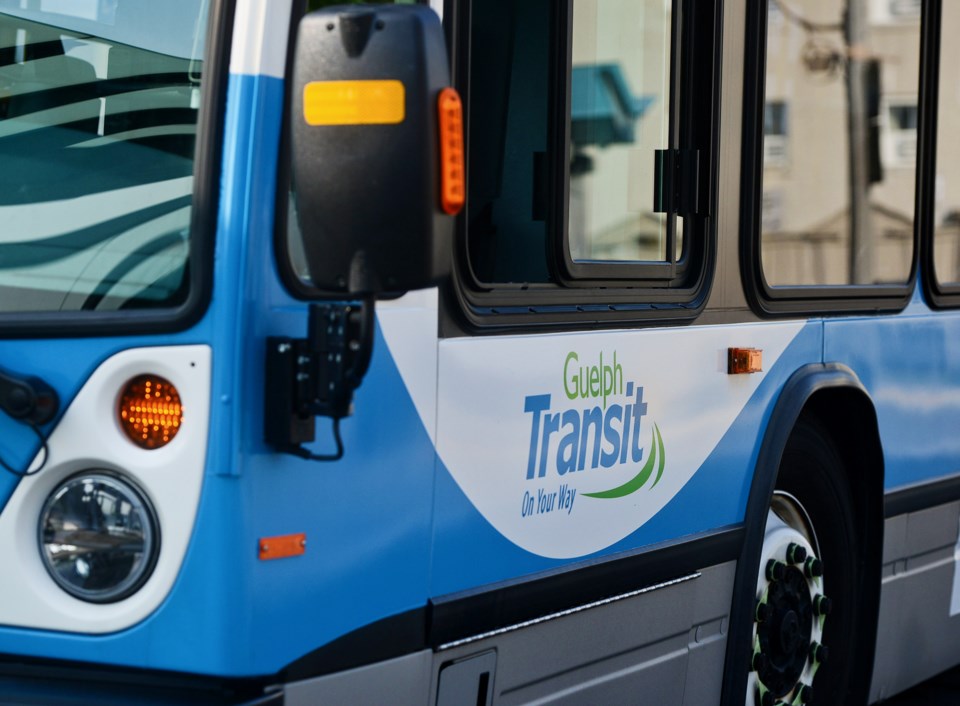The pandemic has had a tremendous impact on transit. Ridership and revenue are way down.
City officials believe it’s going to take four years to get back up to speed and council is considering ways to take some of the pressure off taxpayers in the meantime.
“All transit authorities everywhere in the world are having problems,” said Coun. Bob Bell during a council workshop on transit Tuesday afternoon. “The model is broken. We need a new model. ... With the advent of COVID and plunging ridership, it's a recipe for enormous financial loss."
Prior to the pandemic, Guelph Transit had monthly ridership just shy of 568,000. That number has dropped to 226,380. Similarly, revenue was on track to hit $13.5 million for the year and now it's projected at $5.5 million.
“It’s real eye-opening, the impacts on transit,” added Coun. Dan Gibson. “It is a big challenge.”
With that in mind council members floated several ideas for potential change, but made no decisions. The workshop was designed to provide council with information that could be helpful in developing a strategy moving forward and setting the 2021 budget, which is expected early next month.
Ideas put forward by council members on Tuesday include:
-
Implementing micro-transit – offering a service similar to ride-sharing apps – which city staff previously suggested could save hundreds of thousands of dollars compared to traditional route expansions (Gibson)
-
Reduce the number of routes and increase frequency on high-use routes in “transit-supported neighbourhoods” (Bell)
-
Slow down the lifecycle replacement of diesel buses with more expensive electric buses (Coun. Dominique O’Rourke)
-
Reevaluate “core assumptions” about service including current goal of providing transit within a five-minute walk for 90 per cent of the city (Coun. Mike Salisbury)
-
Potential fare increase (Coun. Mark MacKinnon)
Before council makes any decisions regarding service level changes, Coun. Cathy Downer hopes staff can calculate the “cost avoidance” associated with a successful transit system. She notes the use of transit reduces the potential wear and tear of additional vehicles on the roads system, as well as the cost of police enforcement.
“It’s good to know what we’re offsetting,” she said.
Coun. Phil Allt would also like to see the Chamber of Commerce and Downtown Guelph Business Association contacted about other “intangible values” of transit.
Much of the workshop was spent discussing plans to electrify the city’s bus fleet, as well as a new city operations hub currently planned to include a new transit facility. Electrification is “essential” to meeting the city’s stated goal of having all city facilities and operations use 100 per cent renewable energy by 2050, stated Antti Vilkko, the city’s general manager of facilities and energy management
Diesel vehicles, primarily the bus fleet, account for more than a quarter (25.7 per cent) of all municipal energy consumption. Additionally, the city’s bus fleet emits 6,725 tonnes of CO2e per year, about 35 per cent of total greenhouse gas emissions from the municipality.
Back in September, council approved the purchase of four electric bus chargers to be installed in the current Watson Road transit facility. That process is in progress.
In turn, the city is planning to purchase three electric buses to replace end-of-life diesel buses next year, with arrival expected in 2022.
The federal and provincial governments have pledged $75 million toward the city’s bus fleet electrification efforts, with another $104 million to come from the city ($47 million in development charges and $57 million from reserves). The plan includes a new transit facility, possibly as part of a larger city operations hub, as well as the purchase of 65 electric buses – 35 to replace existing diesel buses through the standard lifecycle replacement process, and 30 associated with service growth.
“This is difficult, it really is,” Mayor Cam Guthrie said of making decisions around electrification and upper-tier government grants which require a municipal contribution. He likened it to a contestant on The Price Is Right who wins a car and can’t afford to drive it. “It’s a tough decision.”
No matter what, Vikko stressed a new transit facility will soon be required as garage and parking lot at the Watson Road facility are over capacity and its electrical system can’t handle more than the four electric bus chargers currently being installed.
Expansion of the facility would have “extensive negative impacts” on service, he said, as renovations and operations can’t happen simultaneously and a temporary operations centre would be needed if an expansion was to happen. As a result, “it’s not possible.”
